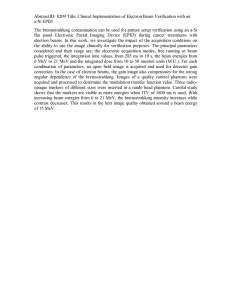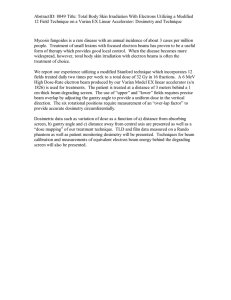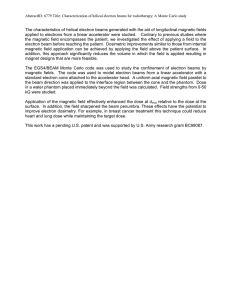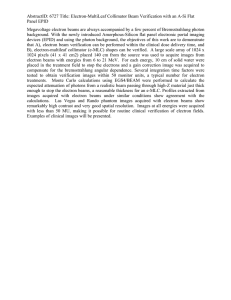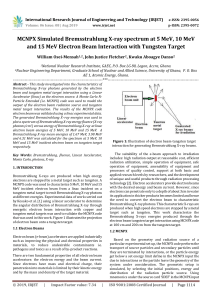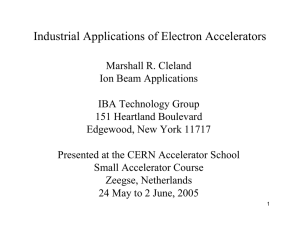AbstractID: 6558 Title: In-Phantom measurements of the bremsstrahlung dose for
advertisement
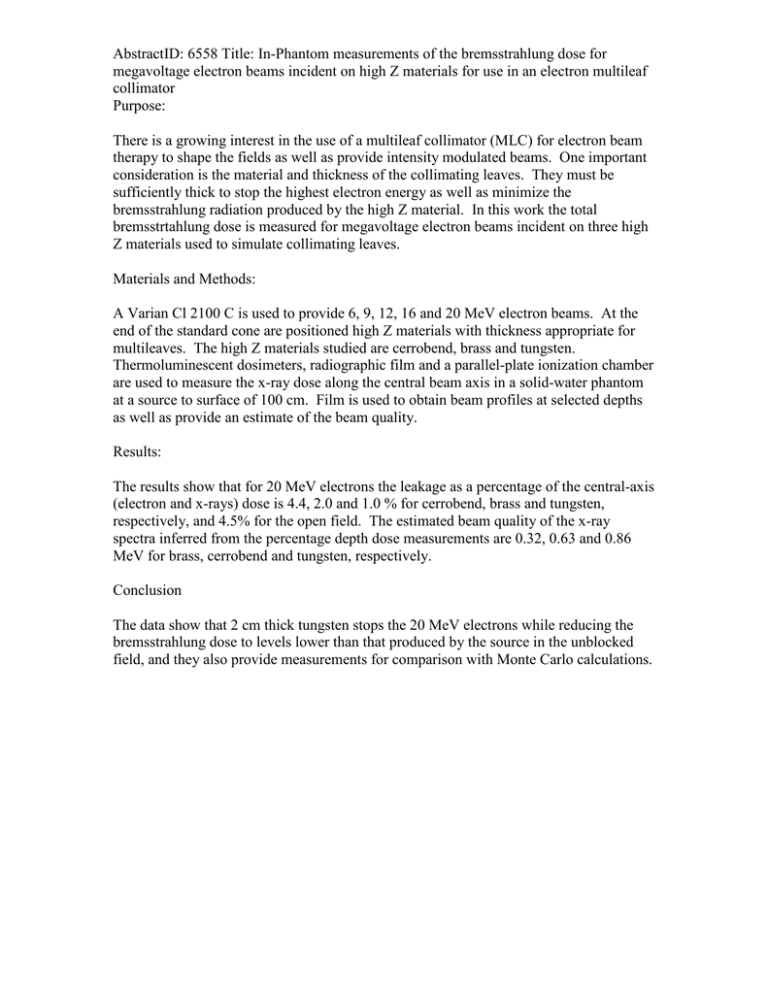
AbstractID: 6558 Title: In-Phantom measurements of the bremsstrahlung dose for megavoltage electron beams incident on high Z materials for use in an electron multileaf collimator Purpose: There is a growing interest in the use of a multileaf collimator (MLC) for electron beam therapy to shape the fields as well as provide intensity modulated beams. One important consideration is the material and thickness of the collimating leaves. They must be sufficiently thick to stop the highest electron energy as well as minimize the bremsstrahlung radiation produced by the high Z material. In this work the total bremsstrtahlung dose is measured for megavoltage electron beams incident on three high Z materials used to simulate collimating leaves. Materials and Methods: A Varian Cl 2100 C is used to provide 6, 9, 12, 16 and 20 MeV electron beams. At the end of the standard cone are positioned high Z materials with thickness appropriate for multileaves. The high Z materials studied are cerrobend, brass and tungsten. Thermoluminescent dosimeters, radiographic film and a parallel-plate ionization chamber are used to measure the x-ray dose along the central beam axis in a solid-water phantom at a source to surface of 100 cm. Film is used to obtain beam profiles at selected depths as well as provide an estimate of the beam quality. Results: The results show that for 20 MeV electrons the leakage as a percentage of the central-axis (electron and x-rays) dose is 4.4, 2.0 and 1.0 % for cerrobend, brass and tungsten, respectively, and 4.5% for the open field. The estimated beam quality of the x-ray spectra inferred from the percentage depth dose measurements are 0.32, 0.63 and 0.86 MeV for brass, cerrobend and tungsten, respectively. Conclusion The data show that 2 cm thick tungsten stops the 20 MeV electrons while reducing the bremsstrahlung dose to levels lower than that produced by the source in the unblocked field, and they also provide measurements for comparison with Monte Carlo calculations.
